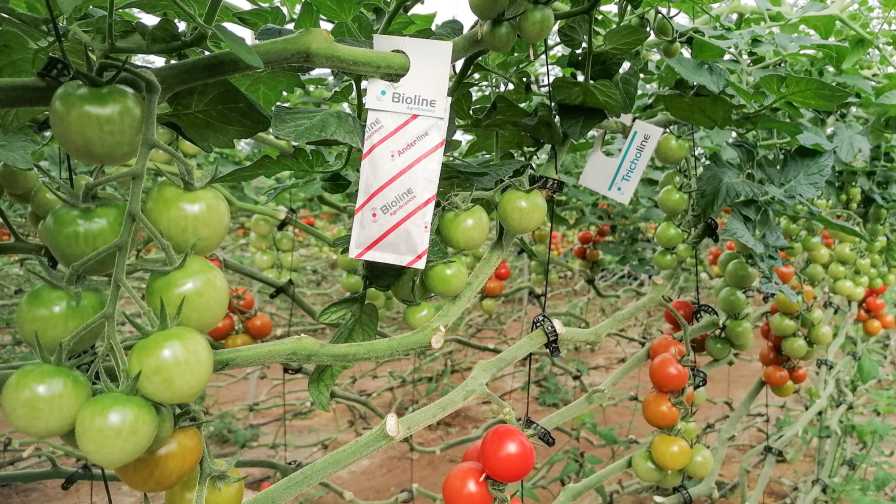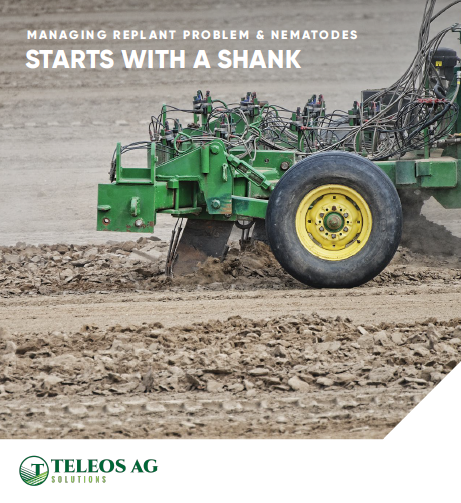10 Ways To Improve Education on the Use of Biologicals in Crops

Knowing your environment and production system is critical to effective use of biological products.
Photo courtesy of Bioline Agrosciences
Because the use of biological products is still relatively new among specialty crop growers, the learning curve remains steep. But there are ways to educate yourself.
We asked product manufacturers how growers can take their education process to the next level. Here’s what they had to say.
1. Focus on the Environment
One of the first things growers must remember is that many biological products are live microbes that need a good environment to thrive in to maximize efficacy. According to Tristan Hudak, Vice President of Ag Biotech, Inc., general farming practices such as reduced tillage or no-till systems help build organic matter levels and improve soil structure to allow for microbes to live, respire, and reproduce.
“Cover crops to build organic matter, maintain moisture levels, and improve soil structure are also beneficial to incorporate into farming systems to support the biology of the bioproducts being utilized,” Hudak says.
2. Don’t Neglect Nutrition
Balancing nutrition and plant-available calcium are critically important, and excess nitrogen causes many problems, according to the team at Creative AG Products. Magic bullet solutions to problems are misguided. A better idea? Adopt a holistic approach to avoid disease and insect problems through soil health and balanced plant nutrition.
Hudak echoes these thoughts.
“We are seeing a lack of inclusion of nutrient management in biologicals in training materials, which is unfortunate because it’s an area where biostimulants and biofertilizers fit in extremely well and are being underutilized,” Hudak says.
3. Get Mobile
Bioline Agrosciences has put together educational workshops called Bioline Academy that are designed to inform and share knowledge and experience with growers about biological pest control and biological control agents (BCAs). Bioline Academy is a mobile training unit visits growers at their location, gives educational information on their biocontrol needs, and shares expert knowledge and advice.
4. Seek Out Early Adopters
Experience matters, and the wisdom gained from early adopters of biological products has demonstrated the proven performance and implementation of biologicals for disease and pest control, according to Mike Allan, Certis USA Vice-President North America.
“Over time, the experience gained from the use of biologicals has been essential to educate growers on the proper handling and timing for optimal performance and success,” Allan says.
5. Safety Is a Big Benefit
The safety aspect of biological products is something that needs to be promoted more within the industry, says Michael Hull, Technical Services Manager for Kemin Crop Technologies.
“Essential oil-based products are safer for workers and the environment, compared to traditional synthetic materials,” Hull says. “They have zero-hour preharvest intervals and re-entry intervals, so growers can apply them at and up to harvest time.”
6. Education Starts with the Supplier
Historically, biologicals companies have struggled to communicate their fit and value within a grower’s crop protection program. This is why Angela Keyser, Senior Strategic MarCom Manager at Marrone Bio Innovations, says the company has put a considerable amount of effort into working with private researchers, universities, external Pest Control Advisers (PCAs), and growers to conduct on-farm and field trials so it can generate insights into the proper timing, rates, and combination needed to ensure biological products can truly add value.
Deb Shatley, Director of Commercial Horticulture at Terramera, agrees, noting that the best education growers can receive often comes from manufacturers working in conjunction with educational and research institutions.
“These collaborations yield credible data results based on high-quality field research,” Shatley says. “Results from field trials provide growers with the knowledge of how biological products work based on best use practices.”
7. Production System Can Affect Use
Growers need reliable, rigorous recommendations about how, when, and where to use biologicals, and this will often differ based on their production system.
“We have developed different formulations of our products to suit different cultivation systems and provide clear guidance on which formulation to use for a wide range of application methods and timings,” says Virginia Corless, Chief Growth Officer at Novihum. “We also inform our customers about circumstances that may not yield substantial benefits from some application strategies, so that they can efficiently use a product only where they will see significant benefit.”
8. Mode of Action Matters
One important thing that growers need to remember when using biological products is the mechanism of action of the particular product. Understanding and trusting the mechanism of action, and how to use the product most effectively in their operation, can provide an enhanced level of comfort when adopting something new, according to Emily Symmes, Senior Manager of Technical Field Services at Suterra.
“This is not dissimilar to the learning curve encountered in earlier transitions from broad-spectrum to more selective insecticides, or from conventional to organic materials,” Symmes says. “Greater emphasis on understanding the pest’s biology, life cycle, and how the product achieves the desired result is needed for successful and secure adoption of any new approach.”
9. Know the Product Inside and Out
There are a few areas where growers can maximize their efforts when using biological products, according to Mike Riffle, Field Development and Sustainability Manager at Valent USA.
“It is important for a grower to remember three things when it comes to biologicals: 1) Understand the product’s labeled use and efficacy to create realistic expectations particularly where it relates to pest pressure and stage of growth, 2) Keep product shelf life in mind, as the shelf life of some biological products can be limited, and 3) Pay attention to recommended storage conditions, especially temperature,” Riffle says.
10. The Importance of Timing
For microbials, multiple applications are better than one application at a high rate. Chemistries work on toxicity, and having sufficient populations is paramount to effectiveness, according to Margaret Lewis, Sales and Marketing Specialist at Westbridge Agricultural Products.
“For biochemical-based biological products, timing as it relates to first occurrence is critical,” Lewis says. “If the pest gets a good head start, biologicals have a hard time catching up. But with effective timing and dosage, they are equivalent to synthetic, conventional products.”










